Nelson Mandela death: A life in pictures
- Published
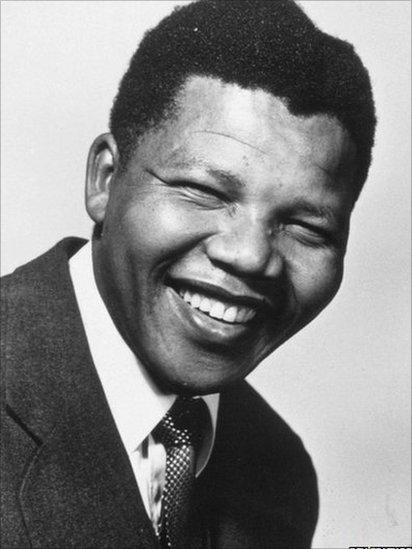
Nelson Mandela, who became South Africa's first black president after a long fight against white minority rule, has died.

Born into a chief's family in the Eastern Cape, he ran away to Johannesburg, where he became a lawyer and joined the African National Congress fight against apartheid.
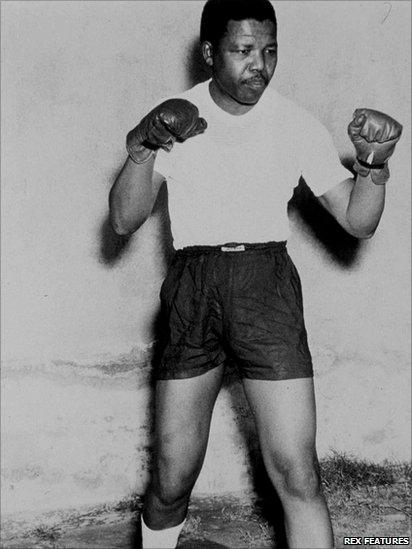
As a young man, Mr Mandela was a keen boxer. "Boxing is egalitarian. In the ring, rank, age, colour and wealth are irrelevant," he wrote in his autobiography, Long Walk to Freedom.

In 1956, he was accused of treason for his ANC work. During the trial, he met a social worker called Winnie Madikizela. His first marriage, to Evelyn Mase, ended in divorce two years later.
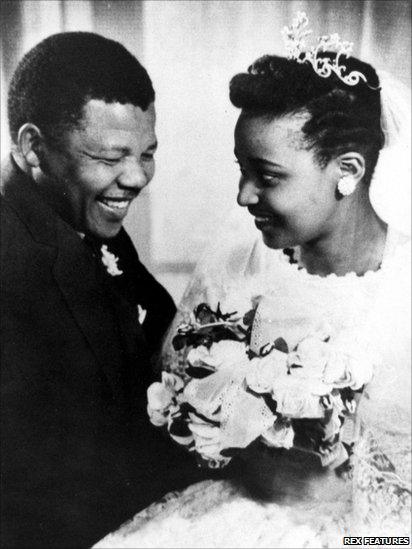
He and Winnie were married in 1958 but they never enjoyed much of a family life as they were both in and out of jail.
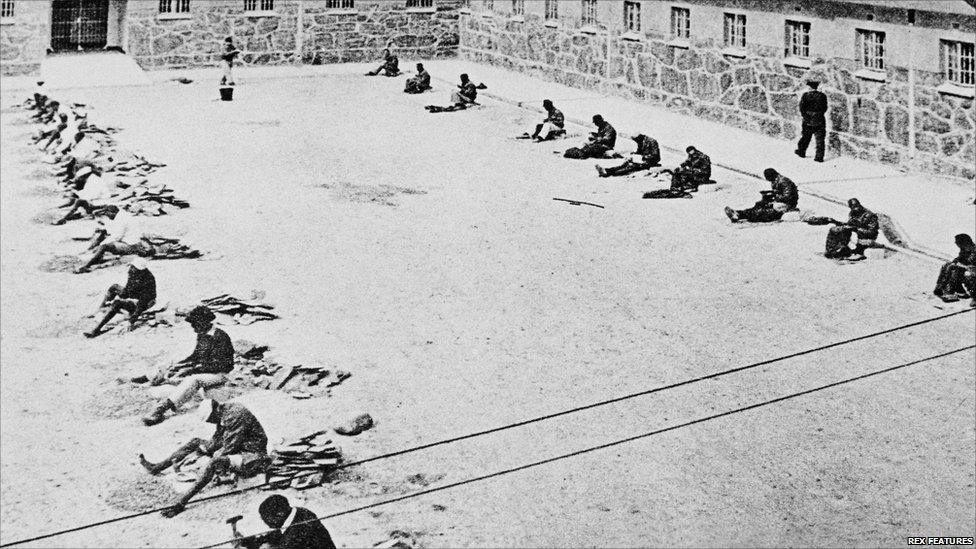
Following a second treason trial, he was convicted of sabotage and sentenced to life in prison in 1964.
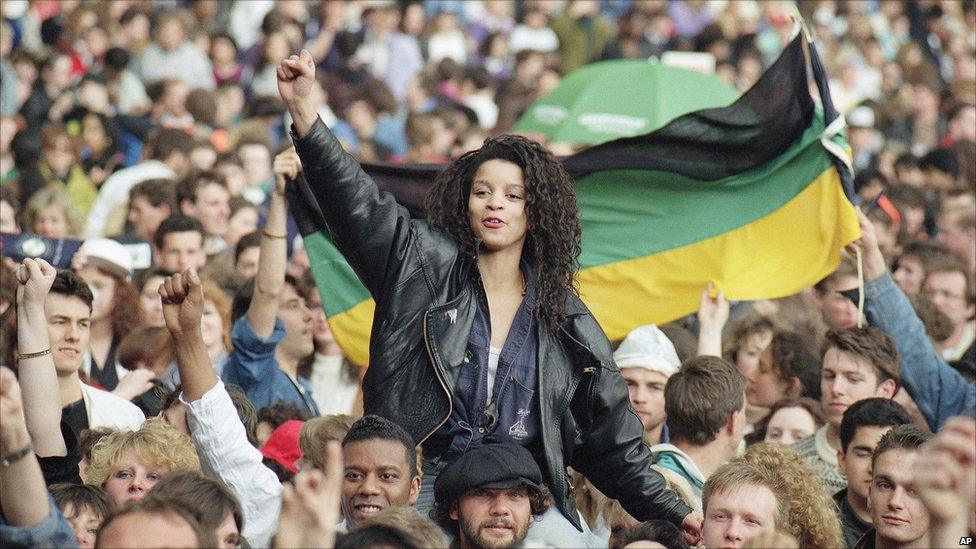
An international campaign began against apartheid. Although strong economic sanctions were never imposed, celebrities and ordinary people from around the world kept up the pressure.
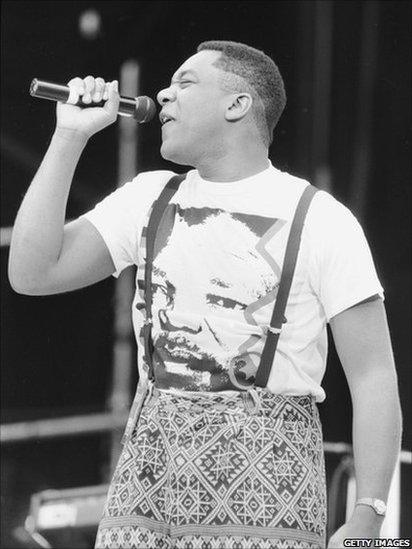
Nelson Mandela's face became the symbol of the worldwide campaign.
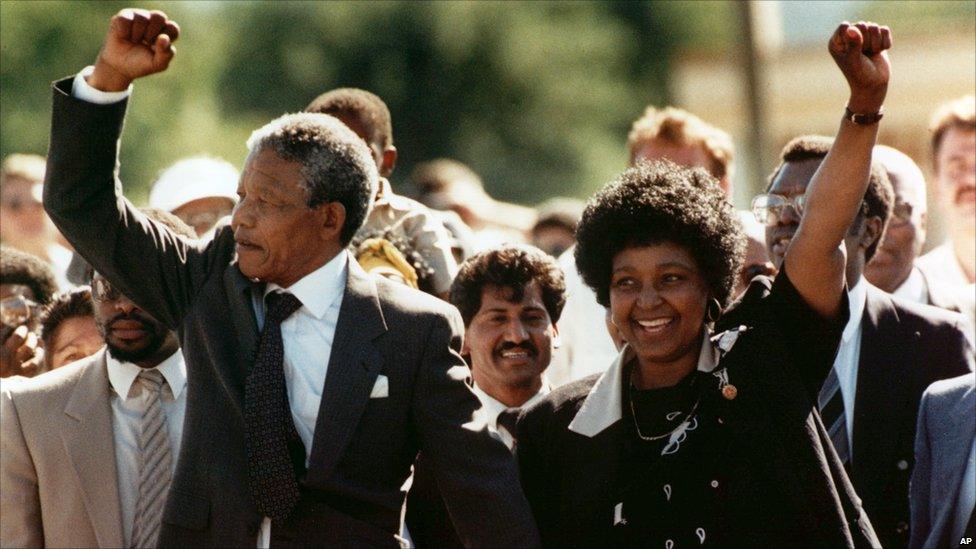
Finally, after more than two decades in prison, Mr Mandela was released in 1990.
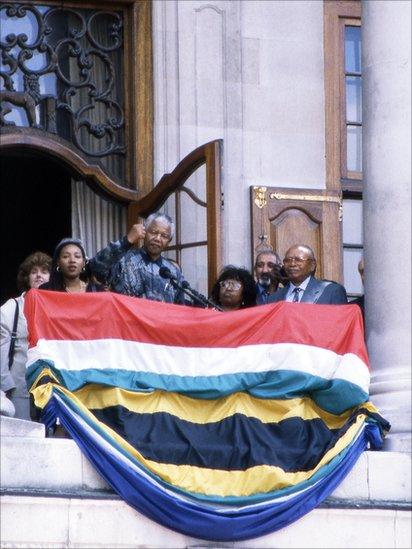
Following his release, Mr Mandela visited many countries and met world leaders as he prepared to stand for election as president. He is seen here at South Africa House in London, where round the clock anti-apartheid protests took place.
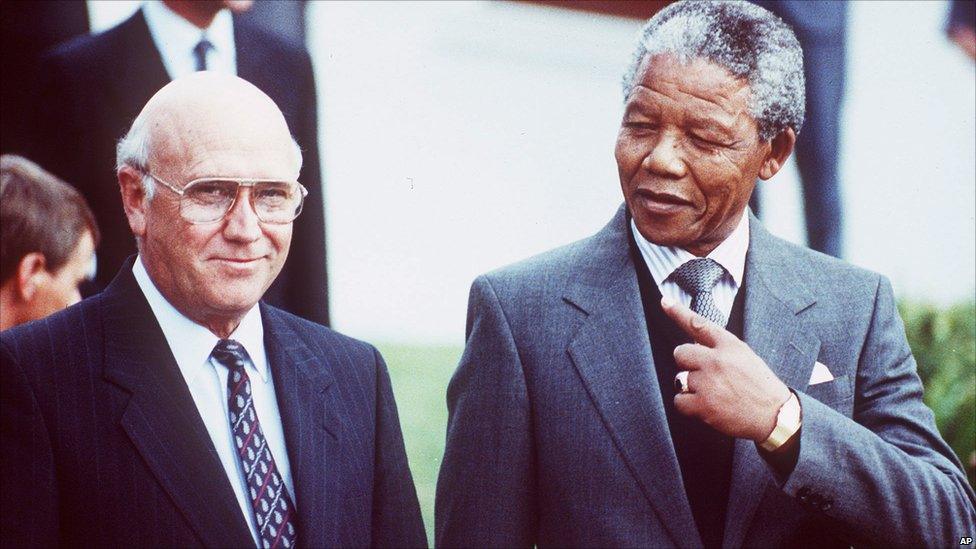
Tough negotiations followed before South African President FW de Klerk agreed to elections under one-person, one-vote. The two men were jointly awarded the Nobel Peace Prize in 1993 for their roles in ending apartheid.
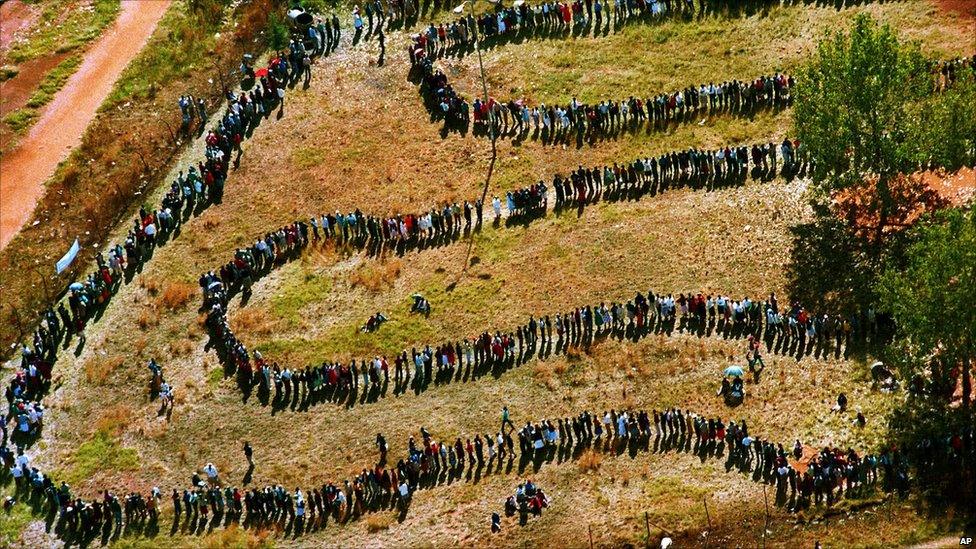
South Africa's first democratic elections were held on 27 April 1994. Black South Africans formed long queues to cast their ballots for the first time. The ANC won a landslide and Nelson Mandela became the first black president.
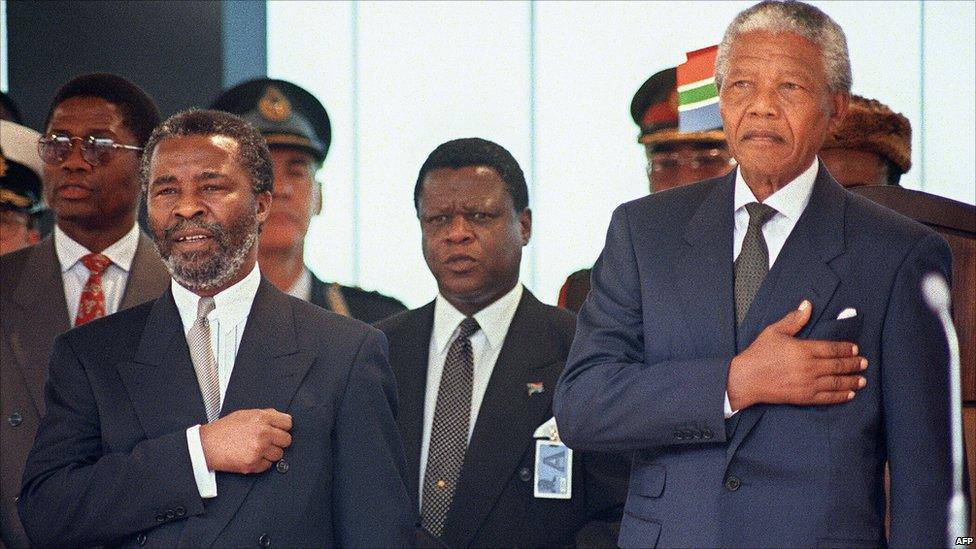
Mr Mandela served just a single term as president and in 1999 became one of the few African leaders to stand down voluntarily. Thabo Mbeki (l) was given the almost impossible task of succeeding Mr Mandela as leader of both South Africa and the ANC.
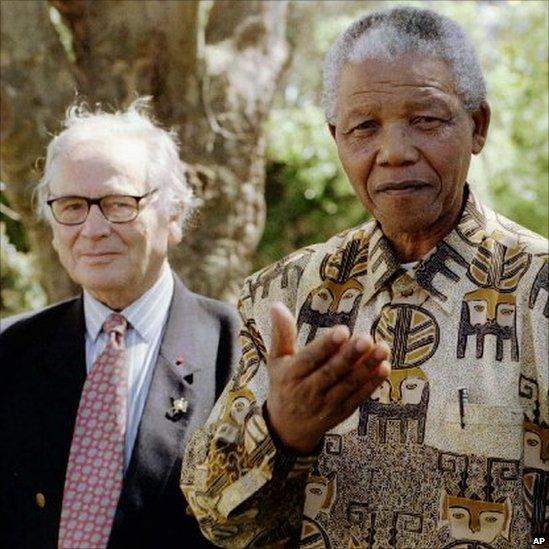
As well as being the world's favourite statesman, he became a fashion icon, known for his brightly-coloured shirts. Here he asks journalists what they think of his shirt after a lunch with fashion designer Pierre Cardin (left).
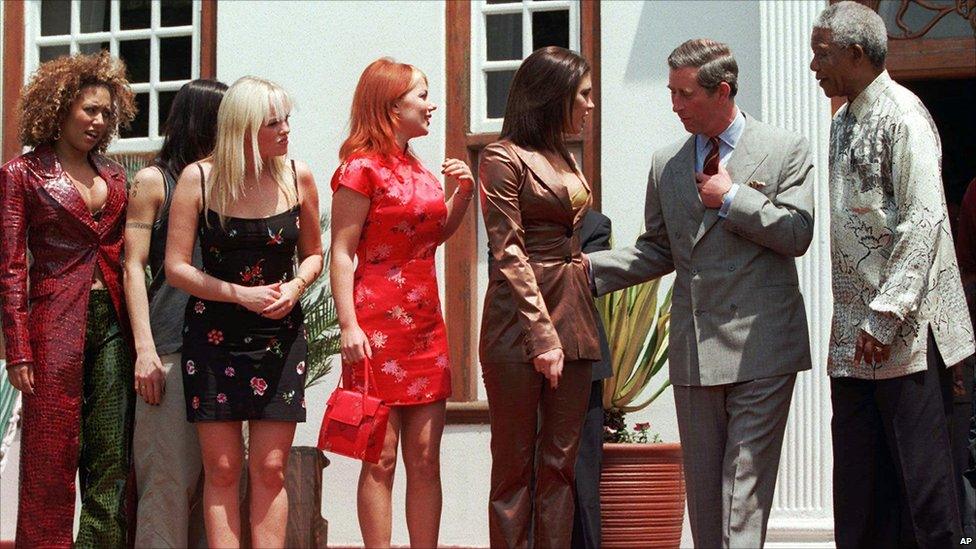
He had two other qualities lacking in most leaders - humility and an ability to laugh at himself, here with Prince Charles and the Spice Girls.
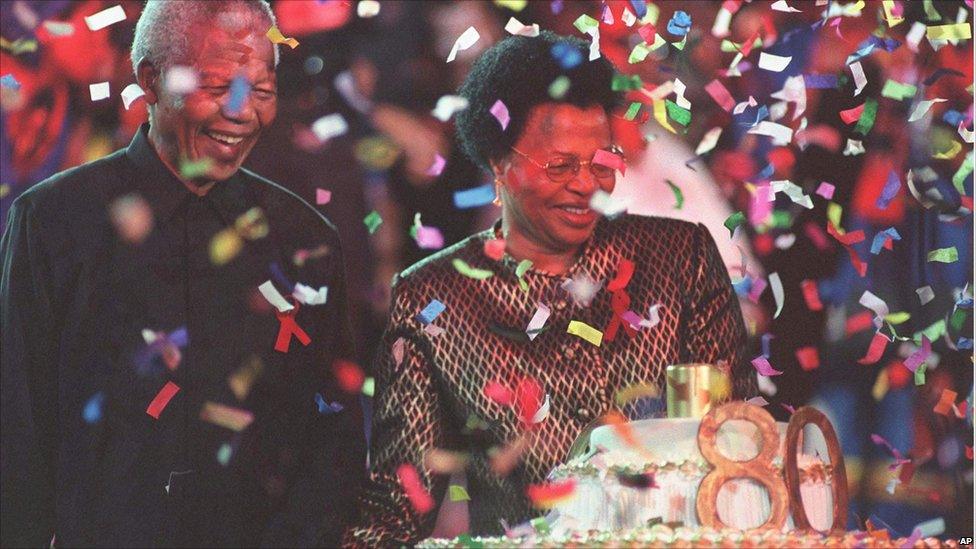
After an acrimonious divorce from Winnie, Mr Mandela married Graca Machel on his 80th birthday, in 1998. Ms Machel is the widow of Mozambique's former leader Samora Machel. Mr Mandela and Graca Machel set up a fund to help deprived African children.
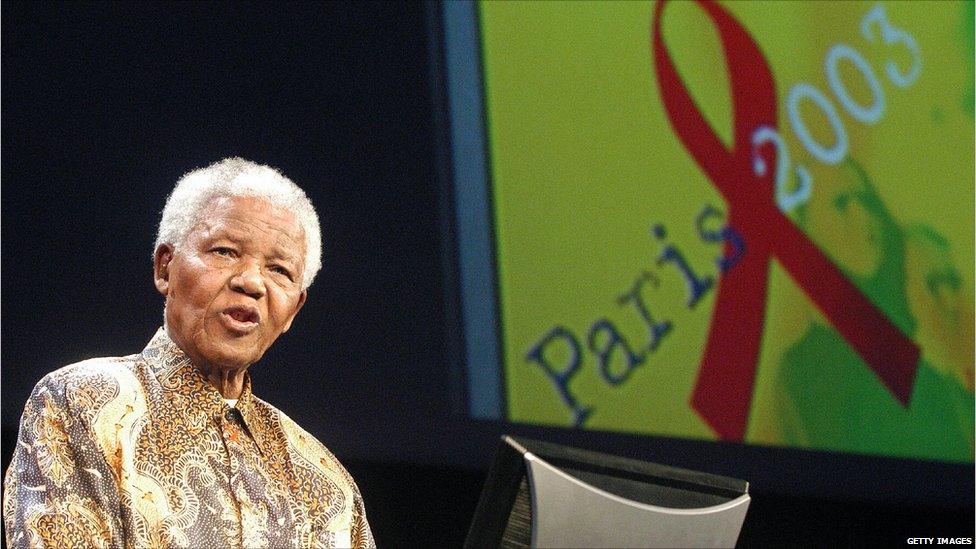
After stepping down as president in 1999, Mr Mandela became South Africa's highest-profile ambassador, campaigning against HIV/Aids and securing his country's right to host the 2010 football World Cup.
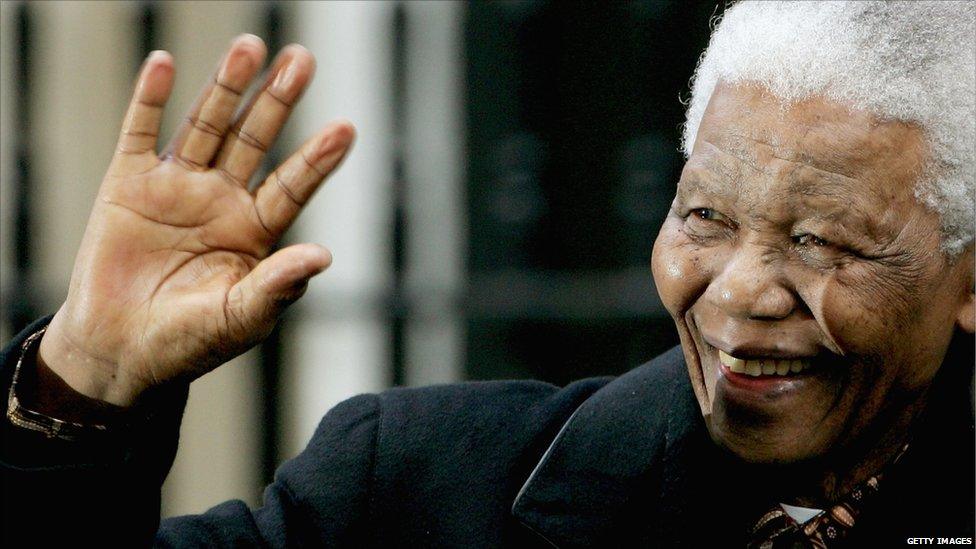
In 2004, at the age of 85, Mr Mandela retired from public life to spend more time with his family and friends and engage in "quiet reflection".
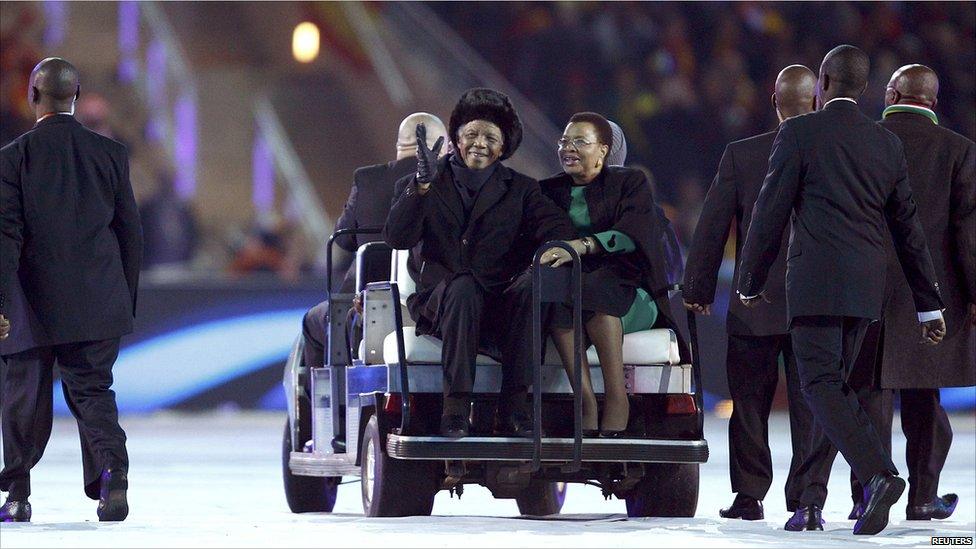
Mr Mandela made a rare public appearance at the closing ceremony of the 2010 World Cup in South Africa. He was in fragile health and was still in mourning for a great-granddaughter who was killed at the start of the tournament.
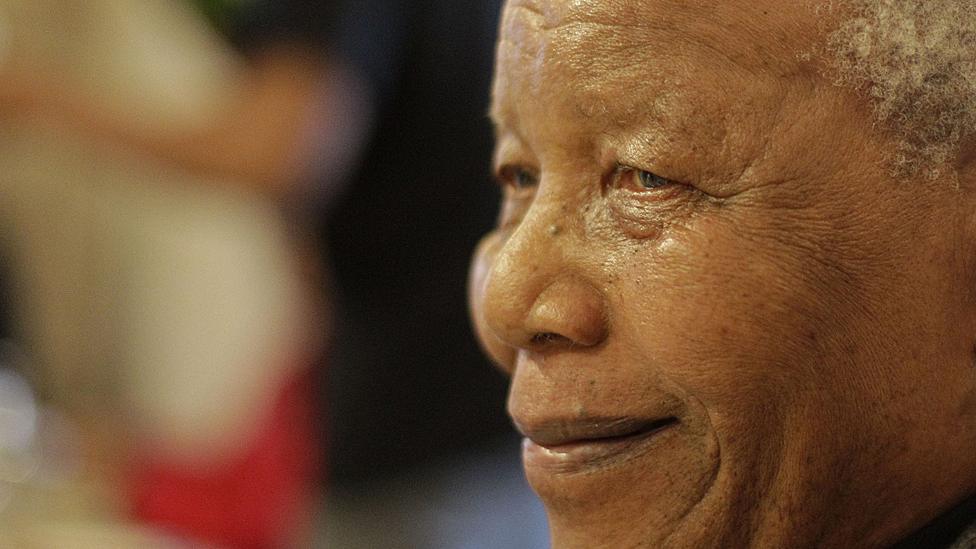
Nelson Mandela celebrating his 94th birthday in 2012. In 2009 the UN adopted his birthday as the Nelson Mandela International Day. Every 18th of July people all over the world are asked to honour his life by devoting 67 minutes of their time – one for each year of his political career – to helping their local communities.

In April 2013, video footage of a frail and dazed-looking Mr Mandela taken a few weeks after hospital treatment for pneumonia stirred controversy. The ANC defended its filmed visit, which was shown on South African state TV.
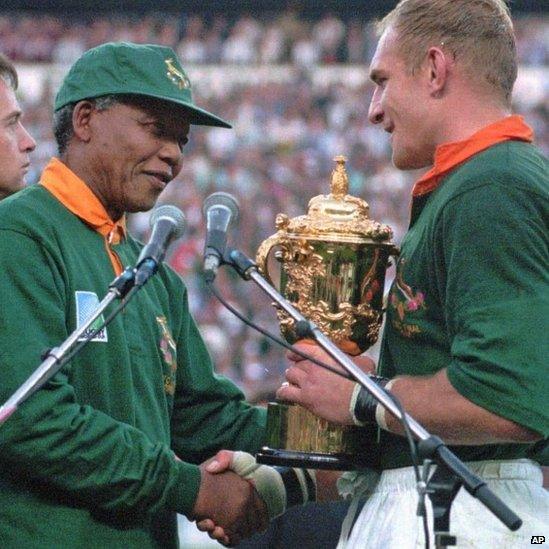
Mr Mandela's legacy of unifying the nation of South Africa after the division of apartheid endures.